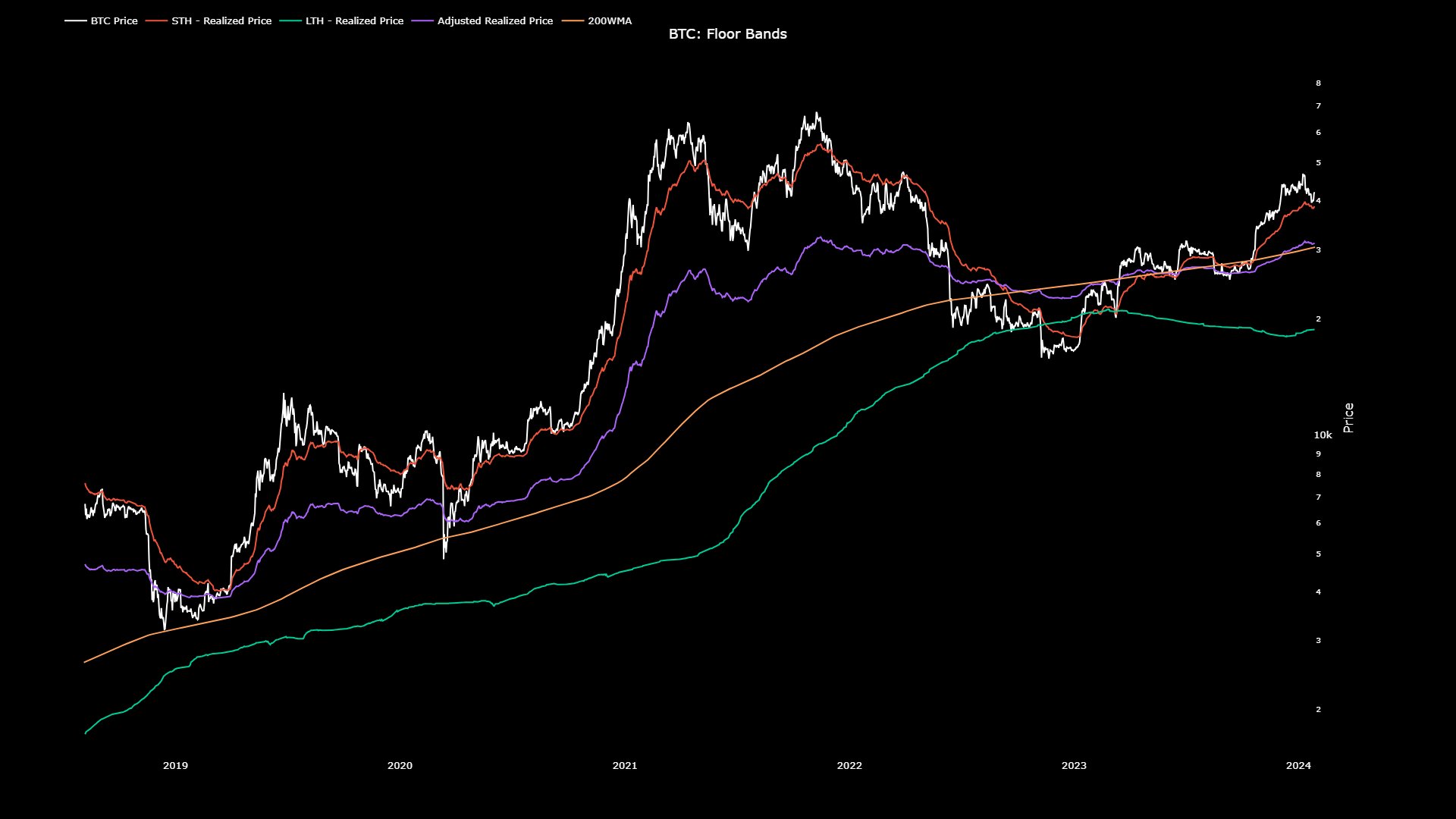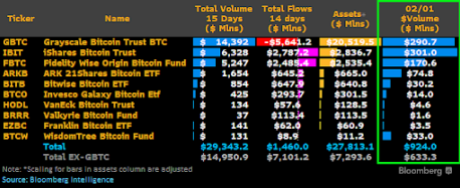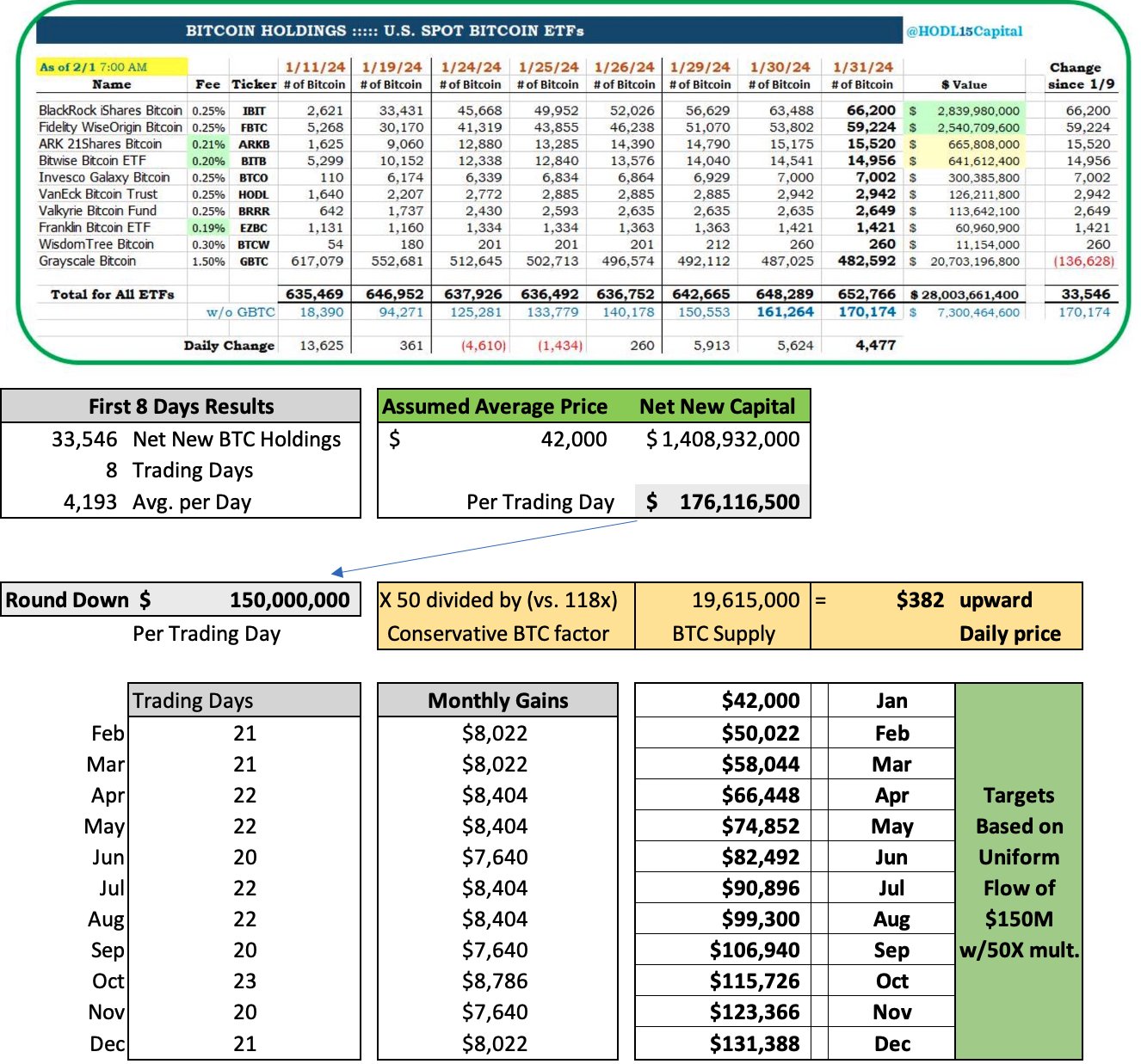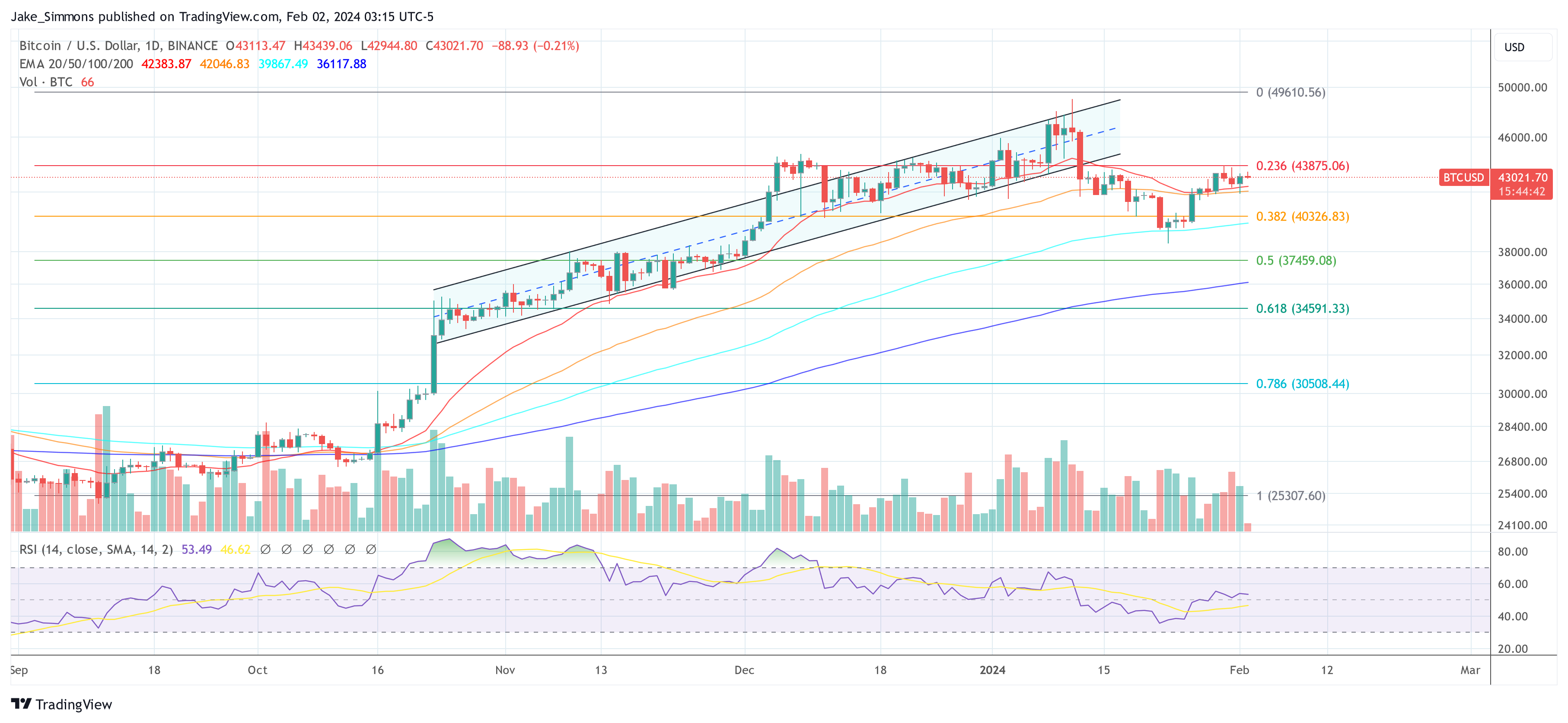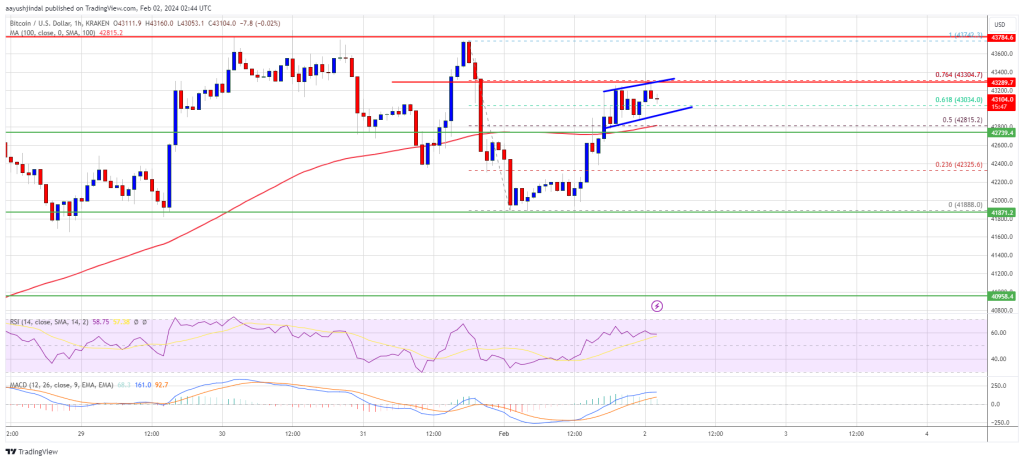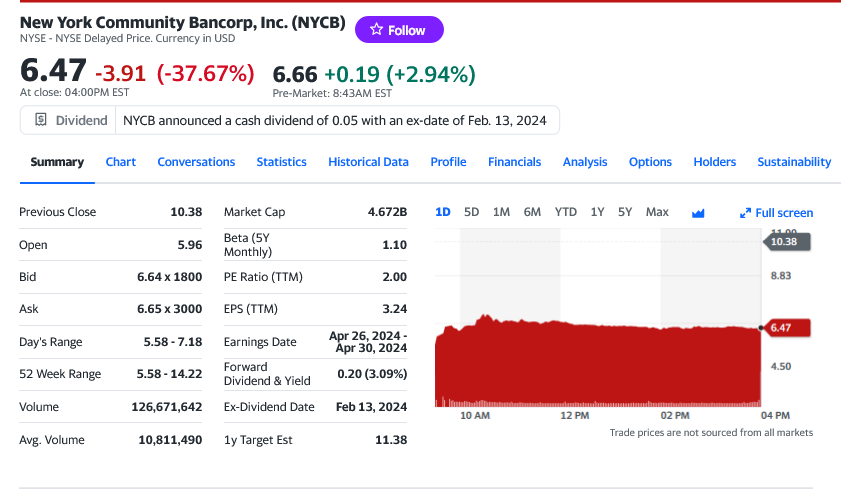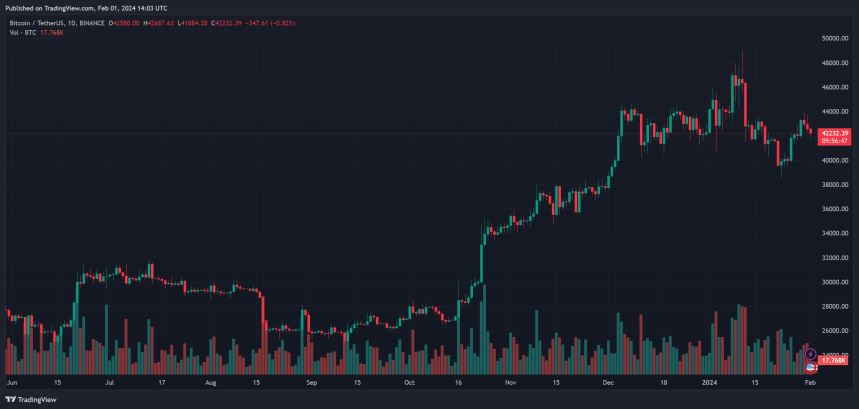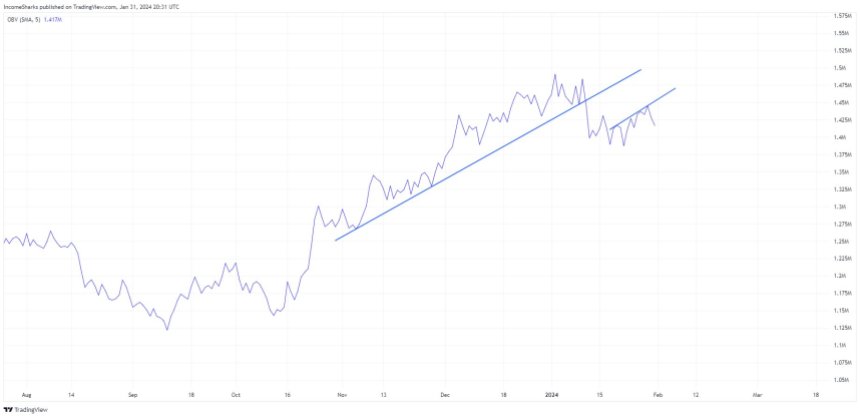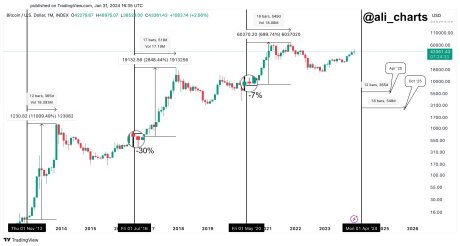Market analysts have recently observed a notable pattern in Bitcoin price chart, potentially signaling a shift in the market trend. Jake Wujastyk, a prominent market analyst, has particularly pointed out the emergence of an inverse head and shoulders pattern on Bitcoin’s daily candle chart.
This pattern, coupled with Bitcoin’s closing price above a significant “volume shelf” signals an imminent upward trajectory for Bitcoin.
Bitcoin Surge On The Horizon
In technical analysis, an inverse head and shoulders pattern is traditionally interpreted as a bullish signal. It is characterized by two lower peaks (shoulders) on either side of a far-down valley (head). The completion of this pattern occurs when the price breaks above the resistance level, known as the “neckline.”
In Bitcoin’s case, this neckline also aligns with a ‘volume shelf,’ as Wujastyk indicates, a price level where many contracts have previously been traded, indicating strong support or resistance.
#Bitcoin Inverse head & shoulders on the daily candle chart as price closed above the volume shelf today. $BTCUSD #Crypto pic.twitter.com/zE1lDJGnAM
— Jake Wujastyk (@Jake__Wujastyk) February 2, 2024
As Bitcoin’s price currently sits above the critical level of $43,000 up by 4.7% in the past week, it suggests a growing momentum among buyers, hinting at a potential uptrend. At the time of writing, Bitcoin has seen a 2.1% increase in its price over the past 24 hours, reaching $43,144.
This price movement occurs against a backdrop of fluctuating daily trading volumes, which have decreased from over $25 billion to below $20 billion in a day.
Notably, this pattern’s emergence is particularly noteworthy as Bitcoin options are set to expire, with 22,000 BTC options nearing their expiry date. These options have a Put Call Ratio of 0.66, a Maxpain point of $42,000, and a notional value of $960 million, as per data from Greekslive.
For context, the Put Call Ratio is a key indicator in options trading, representing the number of put options relative to call options. A lower ratio suggests a bullish sentiment, as it indicates more call options (bets on the price rising) are being traded compared to put options (bets on the price falling).
Market Trends And BTC Halving Anticipation
The broader crypto market, including Ethereum (ETH) options, is also approaching expiration. 230,000 ETH options are set to expire, with a Put Call Ratio of 0.33, a Maxpain point of $2,300, and a notional value of $530 million. These figures suggest a more bullish outlook for Ethereum compared to Bitcoin.
Furthermore, according to GreekLive, the market has seen subdued activity recently, with both realized volatility (RV) and implied volatility (IV) trending lower for major cryptocurrencies.
Feb. 2 Options Data
22,000 BTC options are about to expire with a Put Call Ratio of 0.66, a Maxpain point of $42,000 and a notional value of $960 million.
230,000 ETH options are about to expire with a Put Call Ratio of 0.33, a Maxpain point of $2,300 and a notional value of… pic.twitter.com/tEQWxRXxtB— Greeks.live (@GreeksLive) February 2, 2024
However, introducing Bitcoin spot exchange-traded funds (ETFs) is beginning to attract incremental capital to the crypto market, compensating for the slowdown in grayscale sell-off. Meanwhile, the anticipation around Bitcoin’s halving event, scheduled for April 2024, is creating a buzz in the market.
A recent survey by Bitget indicates a bullish sentiment among investors regarding the upcoming Bitcoin halving. 84% of respondents globally believe that Bitcoin will exceed its all-time high of $69,000 in the next bull run.
Predictions for Bitcoin’s price during the halving are varied, with over half expecting it to be between $30,000 and $60,000, while about 30% foresee it is surpassing $60,000.
Featured image from Unsplash, Chart from TradingView
